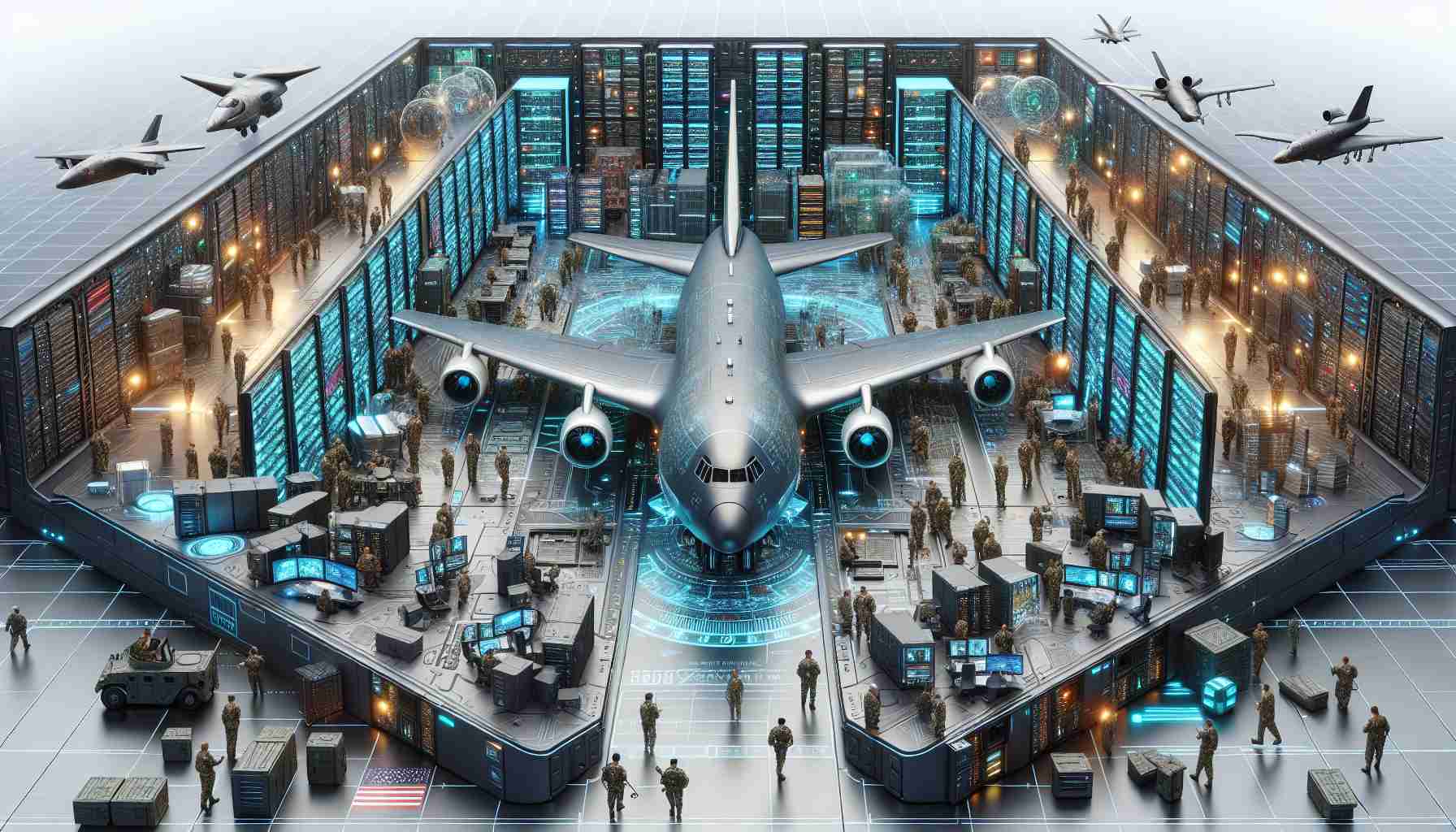
In a significant advancement for military technology, Northrop Grumman has unveiled a pioneering system that enables aircraft to operate as sophisticated flying data centers. This innovative system, named Deep Sensing and Targeting (DSAT), was recently showcased during a U.S. Army exercise aimed at enhancing operational intelligence.
The DSAT technology is designed to seamlessly integrate real-time intelligence from a variety of sources, including satellites and drones. In a demonstration that took place at Vanguard 24 in Fort Huachuca, Arizona, the system exhibited its capability to process diverse intelligence data aboard commercial aircraft. This new method insures that military operators receive accurate targeting information without delay, a crucial factor in fast-paced combat scenarios.
Brent Swift, director of the DSAT program at Northrop Grumman, emphasized that the airborne system provides critical intelligence from space-based sensors directly to operational teams. Traditional ground-based stations often face communication challenges due to geographical obstacles, but the airborne DSAT system effectively circumvents these issues. Enhanced by tactical radios, it ensures robust connections with ground forces, even in challenging conditions.
This development reflects the Army’s broader initiative to modernize its intelligence capabilities. Additional programs, such as the tactical intelligence station developed by Palantir Technologies, highlight the military’s ongoing commitment to integrating cutting-edge technology into its operations. The future of military intelligence capabilities looks promising with these advancements.
Transforming Aircraft into Advanced Data Centers for Military Operations
In an era where data is paramount to military operations, the transformation of aircraft into advanced data centers represents a pivotal leap forward. This evolution not only enhances operational capabilities but also addresses critical real-time data needs during missions.
The integration of big data analytics and artificial intelligence (AI) into airborne platforms holds significant promise for military effectiveness. By leveraging vast amounts of data generated from various sources—such as reconnaissance drones, satellites, and ground units—military aircraft can process and analyze information in real-time, providing commanders with actionable intelligence. However, the transition to this sophisticated system invites numerous questions and challenges.
Key Questions and Answers:
1. What are the primary benefits of aircraft functioning as data centers?
– The primary benefits include improved situational awareness, faster decision-making processes, enhanced real-time communication with ground forces, and the ability to utilize AI and machine learning for data processing and predictive analytics in complex environments.
2. What challenges do military organizations face in implementing this technology?
– Key challenges include ensuring data security, managing the integration of diverse data sources, maintaining system reliability in combat conditions, and overcoming potential resistance to change within the military structure.
3. How do military aircraft compare to traditional ground-based data centers?
– Military aircraft offer greater mobility, allowing for data processing and dissemination in any operational theater. They can deploy rapidly where ground-based centers may be vulnerable or limited by logistics and terrain.
Advantages:
– Mobility: Aircraft can be deployed rapidly to high-risk areas, allowing for flexible operational responses.
– Data Integration: The ability to gather, process, and disseminate data from multiple platforms enhances mission effectiveness and situational awareness.
– Reduced Vulnerability: Airborne platforms can avoid many of the security risks associated with fixed installations.
Disadvantages:
– High Costs: The conversion of aircraft into advanced data centers incurs significant costs related to equipment and research and development.
– Complexity of Operations: The integration of advanced technologies demands specialized training and can lead to operational complexity.
– Potential Over-Reliance on Technology: There is a risk of mission failures if systems are heavily reliant on technology, particularly if technical failures occur in critical moments.
Controversies and Concerns:
With advancements like the Deep Sensing and Targeting (DSAT) system sparking considerable interest, there are concerns around privacy and ethical implications of airborne surveillance. Additionally, the sheer scale of data handled raises questions about data management practices and accountability within military frameworks.
Overall, as military operations increasingly hinge upon accurate and timely data, the evolution of aircraft into flying data centers signifies a critical step toward modern warfare capabilities. The U.S. military’s proactive approach in adopting these technologies is illustrative of its commitment to maintaining strategic superiority.
For more information, visit Northrop Grumman.



